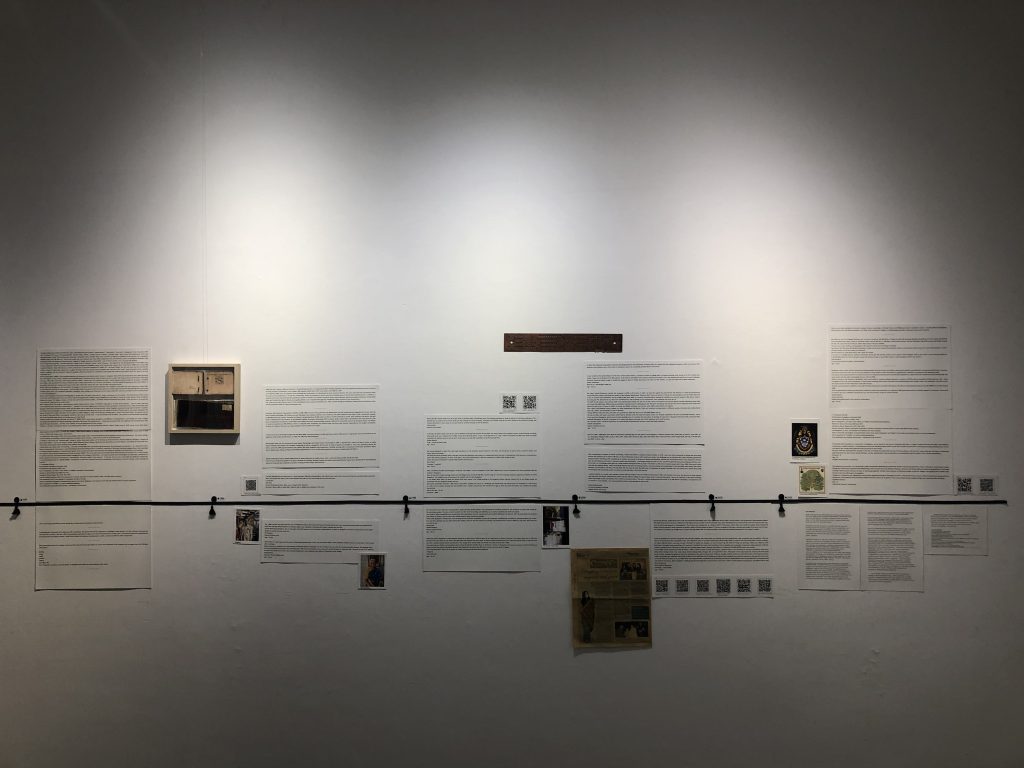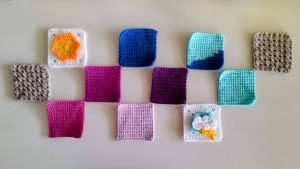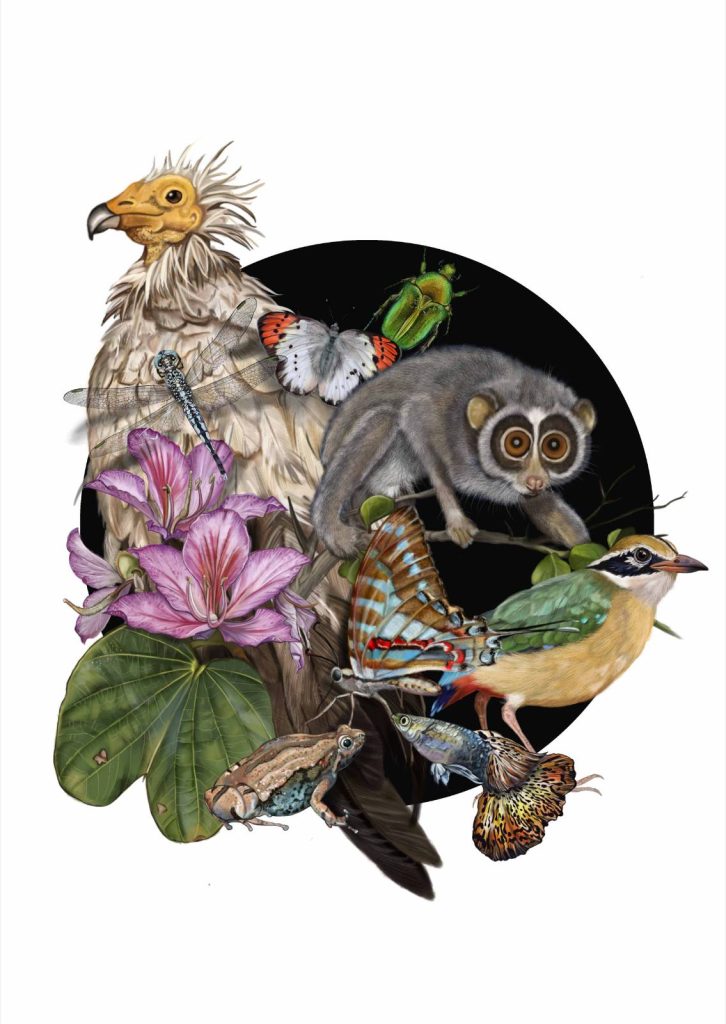Warp and Weft of Bangalore
by JLX Studio

This documentary project juxtaposes data, facts, materials, images and memories of Bangalore’s Textile Industry in a linear format. The focus of the project has been trade-textiles produced in and around Bangalore and specifically woven fabric. We have tried to humanise this brief history. And kept it multifaceted than a singular narrative.
This project was possible only by the generous contribution by individuals like J V V Murthi, Olga Norona, Nagaraj, S. Suryanarayana, Jagadish Sambari, Arun Prasad and Ramesh C R. And contributions from Chamundi Silks and United Textile Mills. We cannot undermine the role of technology in getting this done in a short time.
Along the Way 2
by JLX Studio

Auto-rickshaws are part of the urban landscape in every corner of India and many Southeast Asian Cities. The auto-rickshaw doesn’t come fully made from the factory, it needs to be taken to a workshop to be fitted with a roof and to get the seats upholstered, this basic requirement has evolved into a craft cluster.
The final beautiful product is the working together of a network of liners, welders, tinkers, film poster painters, vinyl stickering artists, metal fabricators and craftsmen. The art on these auto-rickshaws spans floral decorative patterns, national and regional sentiments, family names, religious and popular cinema iconography as well as quirky one-liners like ‘Love is sweet poison’. The practitioners of this art form, or liners, who create the canopy roof, also create interiors of the auto-rickshaws using rexine as the base material and the elaborate designs and patterns are a result of techniques such as appliqué, quilting and piping. The resulting design of the auto-rickshaw is a collaborative process between the owner of the vehicle and the liner, the name given to these skilled practitioners. It is the result of constant negotiation between the skill of the liner, the budget, the availability and possibility of the fabrics.
About JLX Studio
Established in 2017, JLX Studio stands out as a leading design and consulting firm in Bangalore, specialising in textiles, design and product strategy. Comprising a team of young creatives and technocrats, the studio is distinguished by its dedication to both commercial excellence and in-depth research into the vernacular culture of Southern India.
Beyond conventional consulting endeavors, JLX Studio undertakes the curation of a visual repository that documents some of the region’s contemporary vernacular art forms. With a global footprint and products retailed under various brands, JLX Studio positively impacts industries in India.
They earnestly navigate the globalised capitalist economy while also immersing themselves in local studies and vernacular traditions, striking a harmonious balance between global and local influences.
Patchwork City
by Lubna Duggal
The idea of Patchwork City is inspired by the theme for City Scripts 2024, Text and Tapestry. As my team, the IIHS Word Lab, mulled over the imageries of knots, loops, stitches and tangles as metaphors for stories in the urban, as well as more literally in textile art, the idea of having a more tangible representation of the festival and its theme occurred to me.

Patchwork City is a crochet work made up of square patches and granny squares stitched together. It uses imagery and motifs to represent some of the themes explored in the festival, such as the city, its skyline, its terrains, and its stories. The skyline colours intend to add a touch of whimsy and fantasy, removed from the typical imagination of the city. This work of textile art uses combinations of crochet stitches to create multiple textures that emerge as a patchwork of granny square patterns and crochet appliques.
Design inspirations: Skyline pillow by Kirsten Ballering (Haak Maar Raak); 3D Granny Squares: 100 Crochet Patterns for Pop-up Granny Squares by Caitie Moore, Celine Semaan, and Sharna Moore; A Modern Girl’s Guide to Granny Squares: Awesome Colour Combinations and Designs for Fun and Fabulous Crochet Blocks by Celine Semaan, Leonie Morgan, and Nicki Dowey; Sail Away Boat by Sue Webb.
About Lubna Duggal
Lubna Duggal is a committed crocheter, who strays into knitting hoodies for her niblings now and then. She was introduced to the fibre arts by her grandmother through knitting, but she soon left it behind as she discovered and taught herself crochet, her true love. While her default mode of crochet is interspersed with periods of obsessive i-cord making, she has more recently come to appreciate the versatility of the granny square and its many variations. She looks to the future with a budding interest in learning how to spin her own yarn. Lubna is also an editor by profession. She is Consultant with the Word Lab at Indian Institute for Human Settlements (IIHS), Bengaluru and Associate Editor at Urbanisation, the biannual IIHS journal.
Time-Traveling on Bengaluru's Metro: Postcards from the Past
by Akhil Reddy, Kruthika G, and Karnataka Philatelic Society
What if Bengaluru’s metro could take us back in time? This is a postcard exhibition that invites you on a nostalgic journey of the Bengaluru that once was along its present day metro lines.

Image credit: From Akhil Reddy’s postcard collection
Picture postcards played a pivotal role in documenting India during the colonial period. Before the revolution of printing technology in Europe, East India Company artists and wives painted scenes from India that were sent back home. Much changed in 1885, when W Roesller, an Austrian photographer, printed his photographs of Calcutta with lithograph technology in Austria and got them back to India to be sold as picture postcards to Europeans. The trend caught up; every big city got its own photographer and publisher—Clifton and Co. in Bombay, H A Mizra and Sons in Delhi, Datta and Co. in Kashmir, Higginbothams in Bangalore and Madras, and Madho and Sons in Belgaum and Bangalore. In 1894, Ravi Varma set up his own printing press in Bombay to mass produce his paintings as postcards to be sold all over the country. The country witnessed a large production of picture postcards between 1900 and 1914. World War I led to their decline in production and circulation. Today, these vintage prints are valuable collectables. Through this postcard exhibition, we unravel the layers of Bengaluru’s storied past.
About Akhil Reddy
Akhil Reddy, an IT systems engineer, developed a passion for collecting postcards and revenue stamps after a chance meeting with Sushil Mehra. Encouraged by Mehra in 2014, Akhil began focusing on gathering picture postcards and revenue stamps from the former Mysore State. He has presented his collection at state, national and international postcard exhibition competitions and won prizes in most of them. He is currently the Secretary of Karnataka Philatelic Society, Bengaluru.
About Kruthika G
Kruthika G is a history geek and a true Bengalurian. Her interest in the city’s past was kindled after working as a researcher for the documentary series ‘Bengaluru idu namma ooru’ in 2015. Since then, she has taken every opportunity to read, write and present the stories of Bengaluru, its people and places. She is an archaeologist and architecture-landscape designer by training and is currently working as an editor for Campus Publications in the Word Lab at Indian Institute for Human Settlements.
How Does the City Speak to You?
by Pooja Saxena

Curated from India Street Lettering, Pooja Saxena’s decade-long effort to document street lettering in India, ‘How does the city speak to you?’ is a collection of photographs and provocations devised to make us more aware of the typographic environment around the city. Whether it is formal questions of material and style, linguistic concerns about scripts and languages, or economic and social considerations about livelihoods, public signage and the letterforms that adorn them offer a unique lens to view the urban tapestry that envelops us.
About Pooja Saxena
An award-winning typeface and graphic designer, Pooja Saxena divides her time between being a team member at international type foundry TypeTogether, and her own independent practice, Matra Type. Her work focuses on design in and for Indic scripts, notably Devanagari, and studying typographic visual languages that emerge in India. She is a devoted collector of ephemera and chronicler of street lettering.
Life Finds a Way in Bustling Bengaluru
by Ravi Jambhekar

Karnataka is known for its rich biodiversity. Blessed with balmy, temperate weather, the state has historically supported lush forests and green cities. Till recently, Bengaluru, one of the largest cities in the state also boasted of thoughtful inclusion of blue and green spaces in the form of manmade lakes and gardens. The recent rapid growth of the city, however, has caused these spaces to shrink drastically.
With the nature illustrations presented in this exhibition, we invite you to appreciate how various organisms continue to survive, sometimes even thrive, in the nooks and crannies of Bengaluru. These are our neighbours, and we share our planet with them. Some are transient visitors in the city, passing through as they travel thousands of miles across the world; some spend their very short lives on the damp campus floors of educational institutions; some employ startling strategies for survival.
Each one has a story worth knowing. These are only a few.
About Ravi Jambhekar
Ravi Jambhekar is a bird and butterfly researcher, a scientist, an ultimate frisbee player, a pani-puri nut, but above all, an artist and a nature illustrator.